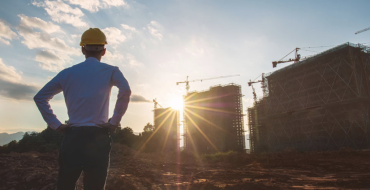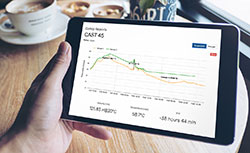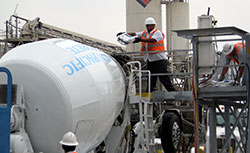
This year has not been a kind start for anyone, including those in construction. No one anticipated that a pandemic would soon spread across the world, affecting over three million people. To make matters worse, the severe restrictions put in place to reduce the spread have crippled many business sectors.
All of which has slowed the economy down significantly.
Luckily, construction has been deemed an essential service in most affected areas, so while work has slowed, it has not stopped altogether.
While this has been a relief for those working in the industry, significant changes have been made as a result of the pandemic. In fact, many have been experiencing a number of challenges, including health risks, supply chain disruptions, labor shortages and layoffs.
Despite the obstacles these challenges present, many who work in the construction sector are thriving. After all, those who work in this sector are used to solving problems and being resilient.
The most effective of them are now even transforming the way they build in response to recent events.
If you’re wondering how to do the same, we’ve listed four strategies that you can adopt to minimize the current climate’s impact on your construction.
1. Promoting the Latest Safety Practices

Safety measures must be increased to respond to the new normal.
To start, the biggest and most significant challenge to tackle will be the health risks associated with the pandemic. As the pandemic is spread through human contact and proximity to COVID-19, people are being encouraged to keep their distance from each other. While this is a good tactic to stop the spread, it’s not a feasible one for all construction workers. After all, most construction projects require dozens of people to complete the work, and they use complex scheduling between various trades.
Still, that doesn’t make construction impossible. Many construction companies have found ways to significantly reduce the risk of exposure for their teams by following the latest safety practices promoted by health-care authorities in their region.
Some of these practices may include the following actions:
- Providing the worksite with health and safety rules signage
- Equipping personal protective equipment when working
- Keeping all frequently touched items and surfaces clean and disinfected
- Having only one worker inside a freight elevator at one time
- Maintaining a two-yard (two-meter) distance between workers
- Installing extra handwashing stations
However, regulations and guidelines surrounding these actions are constantly being updated to respond to changes in communities, so don’t forget to check the websites of your local health-care authorities for any updated practices.
2. Creating Remote Work Opportunities
Of course, not all workers need to physically be at the construction site to move production forward. In fact, it’s critical to find opportunities to reduce the number of workers on-site as this will reduce the risk of exposure to COVID-19.
With that in mind, think about who would be able to work from home. Those in offices and administration, for instance, can easily switch to a remote work environment.
Under the current circumstances, many businesses have become increasingly aware of this advantage and have made the move to the virtual world. Whether it’s with meetings on Zoom or moving to e-commerce platforms, they are finding ways to use technology to keep their businesses up and running.
There’s no better time to embrace the innovative technology that’s available to the construction sector.

Sensors like Maturix™ allow people to monitor concrete remotely.
A great example of this is the sector’s use of advanced concrete sensors. These sensors have been developed to transmit data across long distances, allowing workers to monitor the strength and temperature of developing concrete from anywhere in the world. As a result, contractors and those responsible for quality control can access information in real time to better manage the construction schedule and ensure that no workers are on-site unnecessarily.
There are plenty of other remote work-enabling devices as well. For instance, there are planning software systems to help inspect locations and management systems to track employee progress.
They aren’t the only technological tools out there, so look for technology that can help you keep your team productive and safe.
3. Reducing the Need for More Time and Labor
Now, it’s good that you can keep your existing workforce safe and when possible, remotely working, but how do you balance this with shortened construction schedules? After all, you still need to get your work done on time for your clients and keep your workers separate from one another at the same time to keep your team safe. It’ll be a significant decline in progress if you can’t find a balanced solution.
Of course, this doesn’t have to be the case! There are ways to minimize this issue. One particularly effective method is seeking products that can help you shorten construction schedules and reduce the number of workers, subtrades, and resources needed.

Admixtures are an effective way to eliminate subtrades and speed up construction.
For example, using integral admixtures for concrete waterproofing and durability can help you achieve all that simply by helping you avoid the use of surface-applied products. Whether they’re external membranes or dry shake products, such surface applications take up a lot of time, labor and resources. All of which you don’t need to worry about if you just go with admixtures. You just add the desired admixture to concrete at the time of batching to give the concrete the waterproofed or extra durable quality it needs.
Not all admixtures are of the same caliber, though, so make sure you pick a brand that’s known for its quality.
4. Taking Advantage of Online Learning

Online courses like these offer practical ways to learn at this time.
While these are unpredictable times, using the previous strategies should help you overcome the many challenges of COVID-19. However, to wield them effectively, you want to make sure you give yourself the added advantage of being informed and up to date.
To stay on top of things, consider upgrading your skills with these complimentary accredited courses. One takes an in-depth look at concrete hardening technologies while the other gives you more insight into the world of concrete waterproofing.